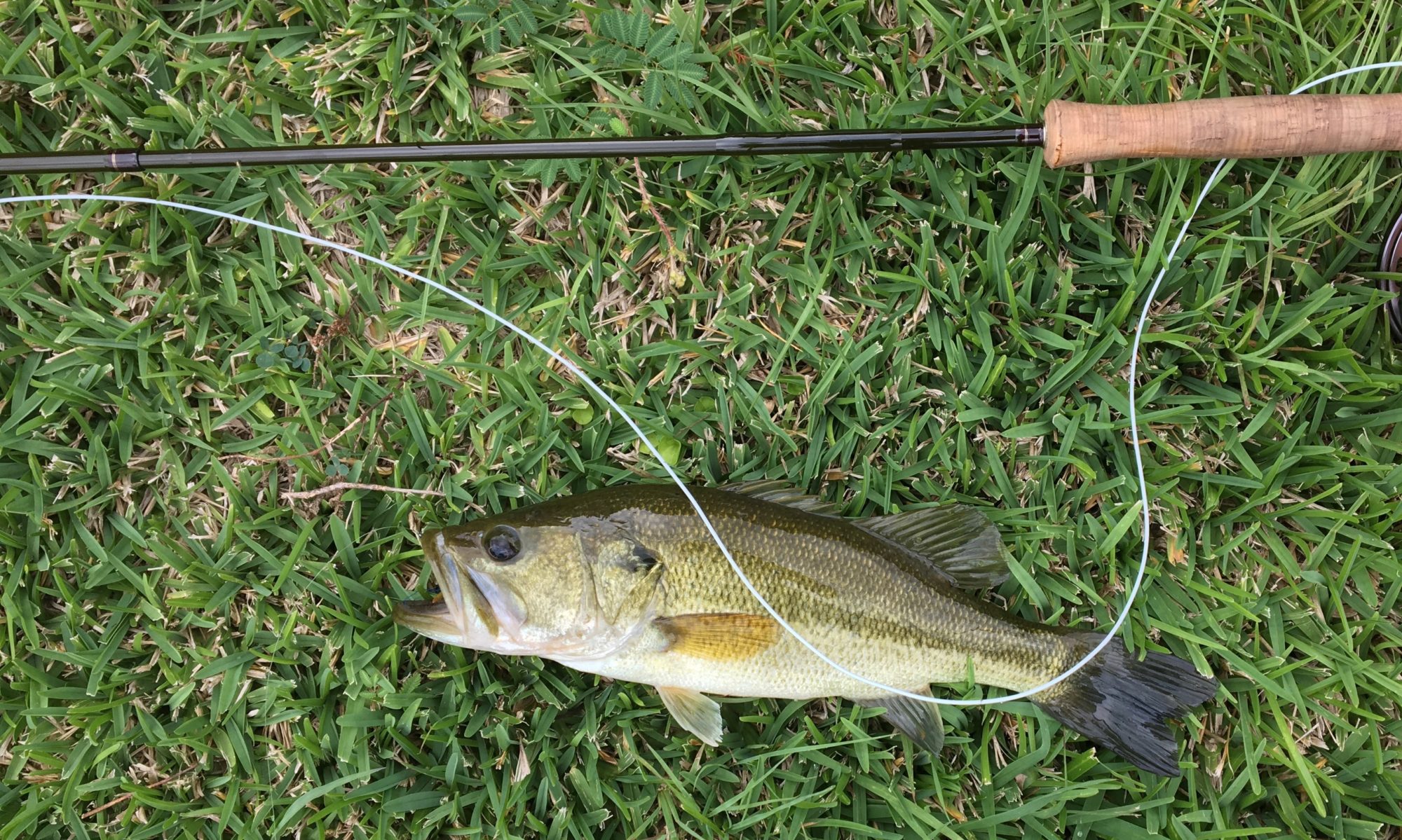
South Dakota and North Dakota could have been just plain Dakota, and this would be Forty-Nine Fly Fish instead of Fifty. If I recall correctly North Dakota insisted on separation because they couldn’t trust South Dakota governors around their dogs. I can’t blame them.
However smart North Dakotans were to separate from the south, North Dakota is not a great fly fishing state. There is plenty of North Dakota fishing, but it’s not fly fishing. If you Google “North Dakota fishing guides,” you’ll find endless photo galleries of happy guides and happy clients displaying heavy stringers of unhappy walleyes. In North Dakota they fish deep, way deep, in big lakes. They fish for meat. It’s a perfectly reasonable way to fish for walleye, but it’s the worst possible way to fly fish. I would have to find a boat. I would have to have deep, deep, deep sinking lines that wouldn’t work well. I wouldn’t be able to feel any takes, or set the hook if by some lucky chance I did feel it. I would have to find a gear-fishing guide who knew the water and who wouldn’t laugh at me.
And I would deserve to be laughed at.

Walleye, North Dakota Game and Fish.
This was our second trip to North Dakota. The first time I didn’t catch a fish. We found a guide and he was just fine, but it was still hit or miss. He caught a small northern pike, and we caught nothing.
This time I decided to fish without a guide. I was certain that whatever I did, guide or no guide, I would not catch a fish, and that I’d have to return to North Dakota still another and another and another time. The only state where I would never catch a fish would ultimately be North Dakota. This whole project would die somewhere in North Dakota.
Not only would I have to keep returning, visiting North Dakota is like visiting Amarillo without all the scenic grandeur. There’s a whole lot of flat. And after one or two more trips there would almost certainly be more interesting places, places other than North Dakota, where I would want to go.

National Park Service, Theodore Roosevelt National Park.
Actually that’s not completely fair. We have only been as far west as Bismarck, which is central. The part of North Dakota we’ve seen in the east was glaciated four times over tens of millions of years, so yeah, it’s pretty flat. There’s some rolling terrain as you leave the Red River Valley and start to move west, and that’s kinda pretty, but flat is the predominate motif. Flat and plowed and sown with corn or wheat in summer.
So the eastern part of the state was covered with glaciers and flattened, but 65 million years ago the far west was a giant swamp. This was the period when the Rockies were being formed by colliding tectonic plates, and North Dakota’s giant swamp filled with a combination of mountain erosion from the then-20,000 foot Rockies and volcanic ash from the Rockies’ volcanoes. Wind and water erosion through the hardening sediment created the Dakota Badlands. Like I said, we didn’t get that far west, but it’s supposed to be beautiful. There’s a National Park, Theodore Roosevelt, and the Little Missouri River.
Like the rest of North Dakota though, it’s not a place for fly fishing.

The last time we went to North Dakota, we fished near Bismarck in the Missouri River. The Missouri, like the Rio Grande or the Mississippi or Columbia, defines us. It’s written into our most achingly beautiful folksong, and fishing it, even without catching a fish, was such a privilege.
Anglos went to the Dakotas because of a gold rush (in the Black Hills), the pacification of the Northern Plains tribes, and railroad land schemes. They didn’t go for the fly fishing.
There were indigenous people in the Dakotas for about 14,000 years, and we know as much about them as we know about other early North American inhabitants. We theorize that they crossed from Asia to Alaska and then spread out following the big game. They’re interesting, but it’s really the much later Plains tribes that capture the imagination.

George Catlin, Buffalo Bulls Back Fat, 1832, oil on canvas, Smithsonian American Art Museum.
They were the last holdouts against Anglo settlement, in that strip of the American Plains from North Dakota south to West Texas, and we know about them in part because the technology for sharing knowledge had solidified. We had painters like George Catlin and Karl Bodmer, we had photographers like Edward Curtis and William Irwin, and even while we destroyed them we studied the Plains tribes. They fascinated us. They still fascinate us.
When Europeans got to the Dakotas, there were five major tribal groups: the Mandan, the Hidatsa, the Arikari, the Dakota (including the Lakota and the Nakota), and the Cheyenne (who were forced out of Minnesota into North and South Dakota). The Mandan, along with the Hidatsa and Dakota, were part of the Siouan language groups–the Sioux–and lived along the Upper Missouri. They welcomed Lewis and Clark. Before the European encounter, the Mandan population is estimated to have been 10,000 to 15,000 people. By 1838, after smallpox, the Mandan population was estimated to be 125.

George Catlin, Sha-ko-ka, a Pretty Mandan Girl, 1832, Smithsonian American Art Museum.
Aren’t those people stunningly beautiful?
The Hidatsa were closely allied to the Mandan. The Hidatsa also lived along the Missouri River in North Dakota. Sacagawea, Lewis and Clark’s guide, was a Shoshone captured by the Hidatsa. After the smallpox epidemic of the 1830s, the Hidatsa were reduced to about 500 people.

Karl Bodmer, Hidatsa Performing Dog Dance, 1832-34, Print, reprinted Part III of Macimilian, Prince of Wied’s Travels in the Interior of North America, 1832-1834, Vol. XXIV, Cleveland, Ohio, The Arthur H. Clark Company, 1906.
There is nothing so final in our history as the defeat of the Plains tribes, from the surrender of the Comanche war chief Quanah Parker at Fort Sill in 1875 to the massacre of the North Plains Lakota Sioux at Wounded Knee in 1890. The story makes magnificently difficult history with which to reckon. Why, though, should we ever make history easy? We don’t talk about these people except in the most romantic terms: they are the Lords of the Plains, the Empire of the Summer Moon, semi-nomadic or nomadic people who were among the greatest horsemen who ever lived. How do we not admire them? How do we not suffer their tragedy, and for us white folk, feel guilt for our part in it?

But there it is. That’s history. All we can do is try to understand who they were, good and bad, and who we were, good and bad, and parse through to some better world.
Meanwhile, while the North Dakota tribes were being decimated and confined to reservations, the railroads advertised for land purchasers across Northern Europe and Russia. A friend gave me a copy of Rachel Calof’s Story, written by Ms. Calof in the 1930s as a Yiddish memoir for her children. She is a fine writer, vivid, unromantic, and harsh. Rachel was a 16-year old Jewish girl brought to homestead in North Dakota as an impoverished match-made bride from Ukraine in the 1890s.
Here is what you need to imagine about Rachel: the sparsity of food and fuel or any comfort, the long winter retreat by an extended family (including an evil mother-in-law) into crowded, desperately impoverished conditions, and the unending grind of turning the wild grass plains into farms.

Rachel’s story is Jewish, but I suspect it could have been written about any other North Dakota ethnic group: Swedish, German, Russian . . . There was some Jewish migration to North Dakota before World War I, but they didn’t stay. In 1890, with a total North Dakota population of about 191,000, there were about 1700 Jews. In 2024, with a total population of about 780,000 there are about 400 North Dakota Jews.
Rachel Calof’s family moved back east to Chicago. Winter was too cold. The mother-in-law was too mean. There was an established immigrant community in Chicago that they would become a part of. Rachel spent her last years living apart from her match-made husband. Her mail-order marriage was not a romantic triumph.
Later, much later, North Dakota became a shale oil boomtown. From 2008 to 2014, because of fracking, North Dakota had the lowest unemployment rate in the nation. It also had substantial increases in violent crime and environmental damage to the surface estates, whose owners had no control over how the oil companies drilled. Walking by the Fargo street people–why is Fargo’s downtown so full of street people?– I reckoned that they were the remnants of the North Dakota boom.
Politics
Every major elected state official in North Dakota is currently Republican, both senators are Republican, and the single congressman is Republican. Interestingly, North Dakota had a Democratic U.S. senator as recently as 2019. Its last Democratic governor was 1992.
Donald Trump easily carried North Dakota in 2020, by 65.11%. Only two counties, both predominately Native American, voted Democratic.

Demographics
In 1870, the non-native population of North Dakota was 2,405. By 1890, the total population was 190,983. By 1930 it was 646,872, but by 2010 it had only increased to 672,591, and by 2010 the shale boom had started. From 2010 to 2020 the population increased by 15.8% to 779,094, all because of fracking. It will be interesting to see what happens to North Dakota’s population in the next census. Like as not it will have leveled out again below 700,000.
Until 2010, the North Dakota population was 90% Anglo, and about 5% Native American. Fracking decreased the percentage of the white population by about 7%, to 82.9%. not because the number of Anglos decreased, but because of relatively higher increases in African American, Hispanic, and Asian populations. Native Americans remain at about 5%.
Weather
In January, in the north of the state, the average temperature in North Dakota is 2°. In the south it’s a balmy 17° Farenheit. For at least 50 days a year temperatures in the state’s southwest reach below 0°. That doesn’t factor in wind chill.
I’m sorry. I just don’t know how else to say this. I’m not generally a cursing man, and I don’t curse often, but here there’s reason: it’s fucking cold in North Dakota in winter. I would have no clue of how to deal with 50 days of sub-zero temperatures. You can’t ice fish with a fly rod.










































